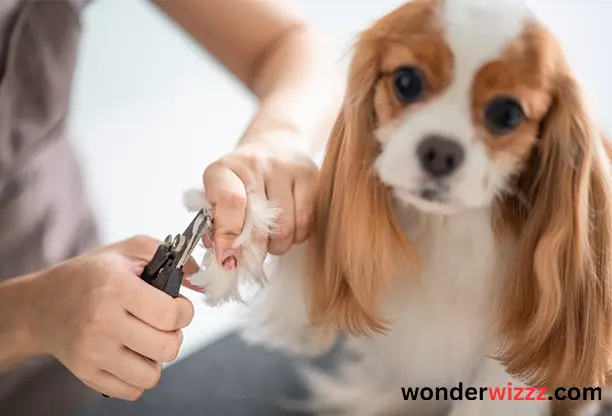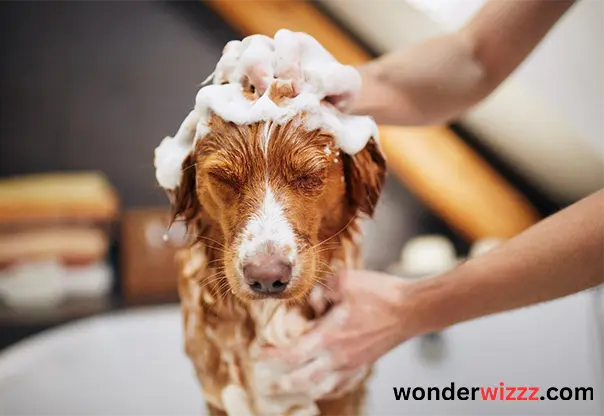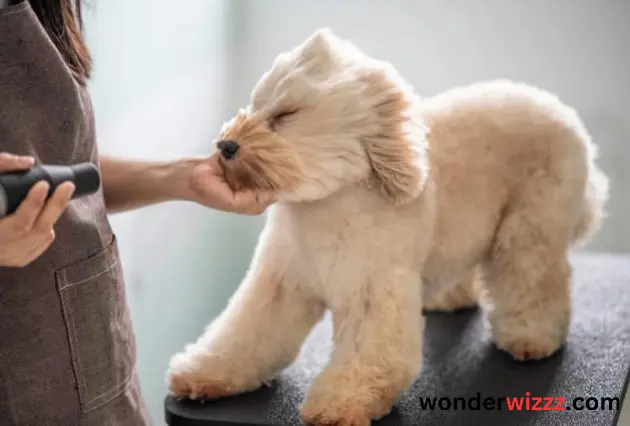Are You Making These Common Pet Grooming Mistakes?

Introduction
A. Brief overview of the importance of pet grooming
Pet grooming is like taking care of a friend. Just like you need to stay clean and healthy, so do your pets. Grooming isn’t just about looks; it’s about their well-being too.
B. Introduction to common pet grooming mistakes
Sometimes, we make mistakes when grooming our furry friends. These mistakes might seem small, but they can cause big problems for your pet. Let’s learn about these mistakes so we can avoid them.
C. Thesis statement: Exploring the detrimental effects of these mistakes and providing solutions
When we make mistakes in grooming our pets, it can harm them. But don’t worry! We’re here to explore these mistakes and find ways to fix them. By understanding these common errors, we can keep our pets happy and healthy.

Lack of Proper Equipment
A. Importance of having the right grooming tools
Having the correct tools for grooming your pet is super important. Just like you need the right tools to do your homework well, pets need proper grooming tools for their well-being.
B. Common mistakes due to inadequate equipment
Sometimes, we might not have the right tools for grooming our pets. This can lead to mistakes like hurting them or not doing a good job. Imagine trying to draw with a broken pencil – it just doesn’t work well!
C. Recommendations for essential grooming tools and their proper usage
To avoid making mistakes, it’s essential to have the right grooming tools. Basic tools like brushes, nail clippers, and shampoo are must-haves. But remember, it’s not just about having them – it’s about using them correctly too. Just like using a pen to write neatly, using grooming tools properly keeps your pet happy and healthy.

Incorrect Bathing Techniques
A. Importance of proper bathing for pet hygiene
Giving your pet a good bath is like giving them a refreshing shower. It helps them stay clean, healthy, and free from dirt and germs.
B. Common mistakes in bathing procedures
Sometimes, we don’t bathe our pets the right way. We might use water that’s too hot or cold, or forget to rinse off all the soap. These mistakes can make our pets uncomfortable or even cause skin problems.
C. Tips for correct bathing techniques based on pet type and breed
To bathe your pet correctly, you need to know what works best for their type and breed. For example, some pets need more frequent baths than others. Using lukewarm water and pet-friendly shampoo, and making sure to rinse thoroughly, are key steps. Think of it like giving your pet a spa day – they’ll feel fresh and happy afterward!

Neglecting Dental Care
A. Significance of dental hygiene in pets
Just like humans, pets need good dental care to keep their teeth and gums healthy. Imagine if you never brushed your teeth – it wouldn’t feel nice, right? The same goes for pets!
B. Common dental care mistakes made by pet owners
Sometimes, we forget about our pet’s teeth. We might not brush them regularly or give them dental treats. This can lead to problems like bad breath, tooth decay, and gum disease.
C. Suggestions for maintaining optimal dental health in pets
To keep your pet’s teeth in top shape, it’s important to brush them regularly with a pet toothbrush and toothpaste. You can also give them dental treats or toys to chew on, which helps clean their teeth. Think of it like giving your pet a toothbrush and some yummy toothpaste – it keeps their smiles bright and their breath fresh!

Ignoring Ear and Eye Hygiene
A. Understanding the importance of ear and eye care
Taking care of your pet’s ears and eyes is important for their overall health. Just like how you clean your ears and eyes, pets need the same care to prevent infections and discomfort.
B. Common mistakes in cleaning ears and eyes
Sometimes, we might not clean our pet’s ears and eyes properly. We might use the wrong products or not clean them often enough. This can lead to infections or irritation, making our pets unhappy.
C. Guidance on proper techniques for ear and eye hygiene
To keep your pet’s ears and eyes healthy, it’s essential to clean them gently and regularly. Use a soft cloth or cotton ball dampened with warm water to wipe away dirt and discharge. And remember, never use sharp objects or harsh chemicals in your pet’s ears or eyes. Think of it like giving your pet a gentle massage around their ears and eyes – it feels good and keeps them healthy!
Overlooking Nail Trimming
A. Impact of neglected nail trimming on pet health
Not trimming your pet’s nails can cause problems. Just like how you feel uncomfortable with long fingernails, pets can experience pain, difficulty walking, and even joint issues if their nails get too long.
B. Common mistakes in nail trimming
Sometimes, we don’t trim our pet’s nails correctly. We might cut them too short, causing bleeding and pain. Or we might forget to trim them regularly, allowing them to grow too long. Both of these mistakes can lead to discomfort for our pets.
C. Recommendations for safe and effective nail trimming practices
To keep your pet’s nails healthy, it’s important to trim them regularly and safely. Use pet-specific nail clippers and trim just the tip of the nail to avoid cutting the quick, which is the sensitive part inside the nail. If you’re unsure, it’s best to seek guidance from a veterinarian or professional groomer. Think of it like giving your pet a regular manicure – it keeps their nails neat and prevents any discomfort!
Inadequate Brushing and Coat Care
A. Benefits of regular brushing and coat care
Brushing your pet’s coat regularly is like giving them a spa treatment. It helps remove dirt, loose fur, and tangles, keeping their skin healthy and their fur shiny. Additionally, it fosters a strong bond between you and your pet!
B. Common mistakes in brushing and coat maintenance
Sometimes, we don’t brush our pets enough, or we use the wrong brush for their fur type. This can lead to mats, knots, and skin irritation. It’s like trying to comb through tangled hair – not fun for your pet!
C. Strategies for proper brushing and coat care routines
To keep your pet’s coat in top condition, establish a regular brushing routine. Use a brush suited to your pet’s fur type, and be gentle to avoid hurting their skin. If your pet has long fur, consider using detangling spray to make brushing easier. Think of it like giving your pet a relaxing massage – they’ll look and feel great afterward!
Conclusion
A. Recap of the importance of avoiding common pet grooming mistakes
Making mistakes in grooming your pet can cause them harm. From using the wrong tools to neglecting their dental care, these errors can lead to discomfort and health issues for your furry friend.
B. Emphasis on the significance of proper grooming for pet health and well-being
Proper grooming isn’t just about making your pet look good; it’s essential for their health and happiness too. By grooming them correctly, you’re helping to keep them clean, comfortable, and free from problems like infections and skin issues.
C. Call to action for pet owners to prioritize correct grooming practices
As pet owners, it’s our responsibility to ensure our pets receive the care they need, including grooming. Let’s commit to learning from these common mistakes and prioritize correct grooming practices for our beloved pets. By doing so, we can ensure they live their best and healthiest lives by our side.
People also ask
What are the problems with grooming dogs?
Grooming problems include skin irritation, injury from tools, and neglecting dental or ear care.
What actions should you avoid when grooming a dog?
Avoid cutting nails too short, using harsh chemicals, and neglecting brushing or dental care.
How can I improve my pet grooming business?
Offer quality service, use safe products, market effectively, and prioritize customer satisfaction and pet well-being.
How important is pet grooming?
Pet grooming is crucial for cleanliness, health, and preventing issues like infections or skin problems.
Why is grooming bad?
Improper grooming can cause discomfort, pain, and health problems for pets.
What are the disadvantages of a pet groomer?
Disadvantages may include physical strain, working with difficult animals, and managing potentially hazardous grooming chemicals.



